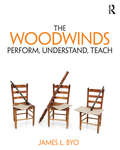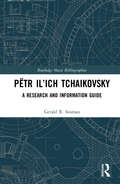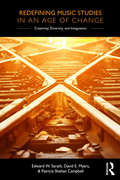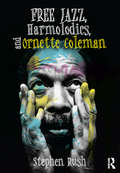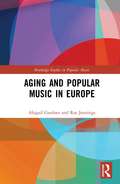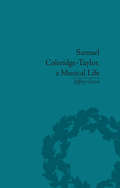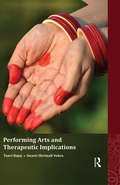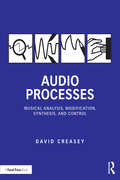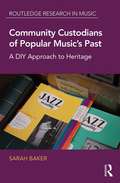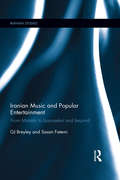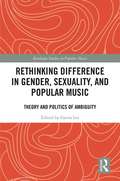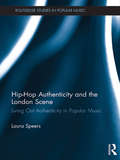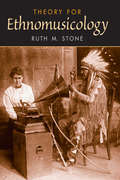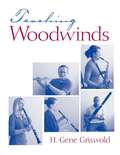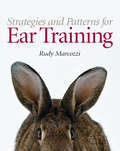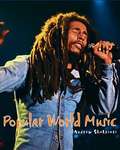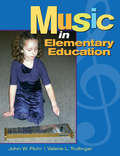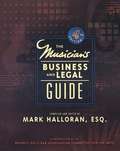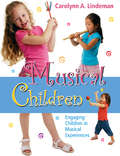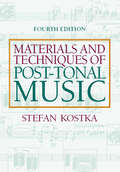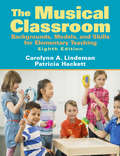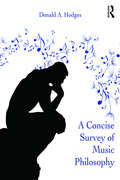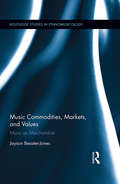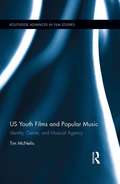- Table View
- List View
The Woodwinds: Perform, Understand, Teach
by James ByoThe Woodwinds: Perform, Understand, Teach provides comprehensive coverage about the woodwind family of musical instruments for prospective instrumental music teachers. What sets this book apart is its focus on how to teach the instruments. Preparing students in the how of teaching is the ultimate goal of the woodwind class and the ultimate goal of this book, which organizes information by its use in teaching beginning instrumentalists. In developing performance and understanding, pre-service teachers are positioned to learn to teach through performance—contrasted with an "old-school" belief that one must first spend much time tediously trying to understand how things work before playing the instruments. The book is organized in three parts: Preliminaries, Teaching the Instruments, and Foundations. Chapters in Teaching the Instruments are organized by instrument (flute, clarinet, saxophone, oboe, bassoon) and, within each instrument, according to how an effective teacher might organize experiences for novice learners. Basic embouchure and air stream are covered first, followed by instrument assembly, then hands and holding. Embouchure coverage returns in greater depth, then articulation, and finally "the mechanism," which includes sections on the instruments of the family, transposition, range, special fingerings, tuning and intonation, and reeds. In Foundations, topics are situated in big picture contexts, calling attention to the broad applicability of information across instruments.
Pëtr Il’ich Tchaikovsky: A Research and Information Guide (Routledge Music Bibliographies)
by Gerald R. SeamanPëtr Il’ich Tchaikovsky: A Research and Information Guide is an annotated bibliography of substantial, relevant published resources relating to the Russian composer. Generally regarded as one of the most remarkable composers of the second half of the nineteenth century, Tchaikovsky is unique in that he was the first outstanding Russian composer to receive a professional musical education, being one of the first students to graduate from the newly opened St. Petersburg Conservatory. Composer of six symphonies, concertos, orchestral works, eight major operas, three ballets, and many chamber, keyboard and vocal works, he also composed important sacred music, which is currently being reassessed by contemporary Russian musicologists who are able to examine materials previously restricted or inaccessible during the Soviet period. Like his colleagues in St. Petersburg, Tchaikovsky was deeply interested in Russian folk song, which plays an important part in his works. This volume evaluates the major studies written about the composer, incorporating new information that has appeared in literary publications, articles and reviews.
Redefining Music Studies in an Age of Change: Creativity, Diversity, and Integration
by Patricia Shehan Campbell Edward W. Sarath David E. MyersRedefining Music Studies in an Age of Change: Creativity, Diversity, Integration takes prevailing discourse about change in music studies to new vistas, as higher education institutions are at a critical moment of determining just what professional musicians and teachers need to survive and thrive in public life. The authors examine how music studies might be redefined through the lenses of creativity, diversity, and integration. which are the three pillars of the recent report of The College Music Society taskforce calling for reform. Focus is on new conceptions for existent areas—such as studio lessons and ensembles, academic history and theory, theory and culture courses, and music education coursework—but also on an exploration of music and human learning, and an understanding of how organizational change happens. Examination of progressive programs will celebrate strides in the direction of the task force vision, as well as extend a critical eye distinguishing between premature proclamations of “mission accomplished” and genuine transformation. The overarching theme is that a foundational, systemic overhaul has the capacity to entirely revitalize the European classical tradition. Practical steps applicable to wide-ranging institutions are considered—from small liberal arts colleges, to conservatory programs, large research universities, and regional state universities.
Free Jazz, Harmolodics, and Ornette Coleman
by Stephen RushFree Jazz, Harmolodics, and Ornette Coleman discusses Ornette Coleman’s musical philosophy of "Harmolodics," an improvisational system deeply inspired by the Civil Rights Movement. Falling under the guise of "free jazz," Harmolodics can be difficult to understand, even for seasoned musicians and musicologists. Yet this book offers a clear and thorough approach to these complex methods, outlining Coleman’s position as the developer of a logical—and historically significant—system of jazz improvisation. Included here are detailed musical analyses of improvisations, accompanied by full transcriptions. Intimate interviews between the author and Coleman explore the deeper issues at work in Harmolodics, issues of race, class, sex, and poverty. The principle of human equality quickly emerges as a central tenet of Coleman’s life and music. Harmolodics is best understood when viewed in its essential form, both as a theory of improvisation and as an artistic expression of racial and human equality.
Aging and Popular Music in Europe (Routledge Studies in Popular Music)
by Abigail Gardner Ros JenningsOpening up the dialogue between popular music studies and aging studies, this book offers a major exploration of age and popular music across Europe. Using a variety of methods to illustrate how age within popular music is contingent and compelling, the volume explores how it provokes curation and devotion across a variety of sites and artists who record in several European languages, and genres including waltz music, electronica, pop, folk, rap, and the French ‘chanson.’ Visiting the many ways in which age is problematized, revered, and performed within Europe in relation to popular music, case studies analyze: French touring shows of popular music stars from the 1960s; André Rieu’s annual Vrijthof concerts in the Netherlands; Kraftwerk and Björk’s appearances at renowned art museums as curated objects; queer approaches to popular music space and time; British folk music inheritances; pan-European strategies of stardom and career longevity; and inheritance and post-colonial hauntings of race and identity. The book works with the notion of travelling, across borders, genres, sexualities, and media, highlighting the visibility of the aging body across a variety of European sites in order to establish popular music through the lens of age as a positive methodology with which to approach popular music cultures, and to offer a counter-narrative to age as decline. This book will appeal to scholars of popular music, popular culture, media studies, cultural studies, aging studies, and cultural gerontology.
Samuel Coleridge-Taylor, a Musical Life
by Jeffrey GreenGreen’s study is more than a biography of an Anglo-African composer.The first comprehensive study of Coleridge-Taylor’s life for almost a century, it reveals how class-ridden Britain could embrace even the most unlikely of cultural icons.
Performing Arts and Therapeutic Implications
by Tanvi Bajaj Swasti Shrimali VohraPresenting an alternative perspective, this book proposes that performing arts forge an emotional bond between the performer and the audience, making the act of performance a therapeutic and restorative experience, and not merely recreational. Studying the life-experiences of six artists, and their unique engagement with three art forms — music, drama and dance — the book highlights the physical, emotional, mental, and spiritual effects of performing arts both on the performers and the audience. More importantly, it takes the current understanding of the therapeutic role of arts beyond a deficit model of health that focuses on their use in curing illnesses, disabilities and imbalances, towards a more positive growth-centric model that relates them to promoting holistic mental health, well-being and happiness. It thus bridges the gap between the theoretical understanding of creative arts therapy and the practical experience of performing arts in non-therapeutic settings. Further, it assumes increasing relevance with respect to fast-changing lifestyles to which stress and ill-health are often attributed. The book will appeal to artists, educators and researchers of performing arts, applied psychology, counselling and therapy, and cultural studies, as well as interested general readers.
Audio Processes: Musical Analysis, Modification, Synthesis, and Control
by David CreaseyDesigned for music technology students, enthusiasts, and professionals, Audio Processes: Musical Analysis, Modification, Synthesis, and Control describes the practical design of audio processes, with a step-by-step approach from basic concepts all the way to sophisticated effects and synthesizers. The themes of analysis, modification, synthesis, and control are covered in an accessible manner and without requiring extensive mathematical skills. The order of material aids the progressive accumulation of understanding, but topics are sufficiently contained that those with prior experience can read individual chapters directly. Extensively supported with block diagrams, algorithms, and audio plots, the ideas and designs are applicable to a wide variety of contexts. The presentation style enables readers to create their own implementations, whatever their preferred programming language or environment. The designs described are practical and extensible, providing a platform for the creation of professional quality results for many different audio applications. There is an accompanying website (www.routledge.com/cw/creasey), which provides further material and examples, to support the book and aid in process development. This book includes: A comprehensive range of audio processes, both popular and less well known, extensively supported with block diagrams and other easily understood visual forms. Detailed descriptions suitable for readers who are new to the subject, and ideas to inspire those with more experience. Designs for a wide range of audio contexts that are easily implemented in visual dataflow environments, as well as conventional programming languages.
Community Custodians of Popular Music's Past: A DIY Approach to Heritage (Routledge Research in Music)
by Sarah BakerThis book examines do-it-yourself (DIY) approaches to the collection, preservation, and display of popular music heritage being undertaken by volunteers in community archives, museums and halls of fame globally. DIY institutions of popular music heritage are much more than ‘unofficial’ versions of ‘official’ institutions; rather, they invoke a complex network of affect and sociality, and are sites where interested people – often enthusiasts – are able to assemble around shared goals related to the preservation of and ownership over the material histories of popular music culture. Drawing on interviews and observations with founders, volunteers and heritage workers in 23 DIY institutions in Australasia, Europe and North America, the book highlights the potentialities of bottom-up, community-based interventions into the archiving and preservation of popular music’s material history. It reveals the kinds of collections being housed in these archives, how they are managed and maintained, and explores their relationship to mainstream heritage institutions. The study also considers the cultural labor of volunteers in the DIY institution, arguing that while these are places concerned with heritage management and the preservation of artefacts, they are also extensions of musical communities in the present in which activities around popular music preservation have personal, cultural, community and heritage benefits. By looking at volunteers’ everyday interventions in the archiving and curating of popular music’s material past, the book highlights how DIY institutions build upon national heritage strategies at the community level and have the capacity to contribute to the democratization of popular music heritage. This book will have a broad appeal to a range of scholars in the fields of popular music studies, musicology, ethnomusicology, archive studies and archival science, museum studies, critical heritage studies, cultural studies, cultural sociology and media studies.
Iranian Music and Popular Entertainment: From Motrebi to Losanjelesi and Beyond (Iranian Studies)
by Sasan Fatemi Gj BreyleyThe word motreb finds its roots in the Arabic verb taraba, meaning 'to make happy.' Originally denoting all musicians in Iran, motrebi came to be associated, pejoratively, with the cheerful vulgarity of the lowbrow entertainer. In Iranian Music and Popular Entertainment, GJ Breyley and Sasan Fatemi examine the historically overlooked motrebi milieu, with its marginalized characters, from luti to gardan koloft and mashti, as well as the tenacity of motreb who continued their careers against all odds. They then turn to losanjelesi, the most pervasive form of Iranian popular music that developed as motrebi declined, and related musical forms in Iran and its diasporic popular cultural centre, Los Angeles. For the first time in English, the book makes available musical transcriptions, analysis and lyrics that illustrate the complexities of this history. As it presents the findings of the authors' years of ethnographic work with the history's protagonists, from senior motreb to pop-rock stars, the book reveals parallels between the decline of motrebi and the rise of 'modernity.' In the twentieth century, the fate of Tehran's motrebi music was shaped by the social and urban polarization that ensued from the modern market economy, and losanjelesi would be similarly affected by transnational relations, revolution, war and migration. Through its detailed and informed examination of Iranian popular music, this study reveals much about the values and anxieties of Iranian society, and is a valuable resource for students and scholars of Iranian society and history.
Rethinking Difference in Gender, Sexuality, and Popular Music: Theory and Politics of Ambiguity (Routledge Studies in Popular Music)
by Gavin LeeIn studies of gender and sexuality in popular music, the concept of difference is often a crucial analytic used to detect social agency; however, the alternative analytic of ambiguity has never been systematically examined. While difference from heterosexual norms is taken to be the multivalent sign of resistance, oppression, and self-invention, it can lead to inflated claims of the degree and power of difference. This book offers critically-oriented case studies that examine the theory and politics of ambiguity. Ambiguity means that there are both positive and negative implications in any gender and sexuality practices, both sameness and difference from heteronormativity, and unfixed possibility in the diverse nature of discourse and practice (rather than just "difference" among fixed multiplicities). Contributors present a diverse array of approaches through music, sound, psyche, body, dance, performance, race, ethnicity, power, discourse, and history. A wide variety of popular music genres are broached, including gay circuit remixes, punk rock, Goth music, cross-dress performance, billboard 100 songs, global pop, and nineteenth-century minstrelsy. The authors examine the ambiguities of performance and reception, and address the vexed question of whether it is possible for genuinely new forms of gender and sexuality to emerge musically. This book makes a distinctive contribution to studies of gender and sexuality in popular music, and will be of interest to fields including Popular Music Studies, Musicology/Ethnomusicology, Cultural Studies, Queer Studies, and Media Studies.
Hip-Hop Authenticity and the London Scene: Living Out Authenticity in Popular Music (Routledge Studies in Popular Music)
by Laura SpeersThis book explores the highly-valued, and often highly-charged, ideal of authenticity in hip-hop — what it is, why it is important, and how it affects the day-to-day life of rap artists. By analyzing the practices, identities, and struggles that shape the lives of rappers in the London scene, the study exposes the strategies and tactics that hip-hop practitioners engage in to negotiate authenticity on an everyday basis. In-depth interviews and fieldwork provide insight into the nature of authenticity in global hip-hop, and the dynamics of cultural appropriation, globalization, marketization, and digitization through a combined set of ethnographic, theoretical, and cultural analysis. Despite growing attention to authenticity in popular music, this book is the first to offer a comprehensive theoretical model explaining the reflexive approaches hip-hop artists adopt to ‘live out’ authenticity in everyday life. This model will act as a blueprint for new studies in global hip-hop and be generative in other authenticity research, and for other music genres such as punk, rock and roll, country, and blues that share similar issues surrounding contested artist authenticity.
Theory for Ethnomusicology
by Ruth M. StoneFor courses in ethnomusicological theory. This book covers ethnomusicological theory, exploring some of the underpinnings of different approaches and analyzing differences and commonalities in these orientations. This text addresses how ethnomusicologists have used and applied these theories in ethnographic research.
Teaching Woodwinds
by Harold Gene GriswoldFor one semester/quarter courses in woodwind methods. Teaching Woodwinds has draws on the authors thirty-five years of experience teaching woodwinds to students. Organized by specific teach topics from the fundamentals of hand and finger position to articulation and intonation. Drawing on a classic set of teacher/student duets, the included twenty-five class lessons enable students to learn by doing and by listening as they play duets with the instructor.
Strategies and Patterns for Ear Training
by Rudy MarcozziA complete, progressive course that teaches musicians how to notate music from audio examples, held on downloadable resources. Basic melodic dictation is followed by progressively more complex scores, in classical, jazz, and popular styles. Designed for the two year undergraduate sequence, Strategies and Patterns for Ear Training offers valuable strategies to students and teachers alike.
Popular World Music
by Andrew ShahriariExploring Popular World Music is the first introductory level text written to introduce students to popular music styles from around the world. Focusing on styles that all students will know -- from Reggae to Klezmer, from Afro-Pop to Kodo drums--the book offers a comprehensive, listening-oriented introduction to the world's popular musical cultures. Each chapter will focus on a specific music style and its associated geographic locale. The salient musical and cultural features associated with each example are discussed in detail to increase our appreciation of the music. Relevant artists will be highlighted and suggestions for further reading and listening will be offered. By the end of the book, the student should be able to 1) recognize a variety of world music styles, 2) articulate musical and cultural knowledge associated with each style, and 3) identify important artists related to the genre. Supplementing the text will be a web site fcreated by the author) featuring the author's world music map, enabling students to explore pop music cultures as they relate to each other; as well as an iTunes playlist for all the highlighted selections in the book. This book should strongly appeal to Intro to World Music Courses for non-majors who wish to study popular rather than traditional musics of the world, which would encompass a large majority of students enrolled in these courses.
Music in Elementary Education
by John Flohr Valerie TrollingerBased on the National Standards, this text is divided into three parts. Part one, Foundations, covers the rationale for a Music Education program in the elementary years; meaning and musical experience; and elements and kinds of music. Part two– Music Elements, Curriculum and Avenues to Music Learning–covers curriculum development; music for special needs students; avenues to music learning and historic and contemporary approaches. Part three–Musical Experiences– is grouped by avenues of music learning and grades. Thanks to years of thorough research, Music in Elementary Education promises is a standard text in the field.
The Musician's Business and Legal Guide
by Mark HalloranWritten specifically for musicians by legal and business experts in the music industry, this text covers nearly all of the confusing business and legal situations musicians find themselves in on the way to and through a professional career. It focuses on issues as they are actually practised with clause-by-clause commentaries on almost all the major music industry contracts.
Musical Children, CD: Engaging Children in Musical Experiences
by Carolynn LindemanMusical Children: Engaging Children in Musical Experiences by Carolyn Lindeman is the only text that focuses on the teaching of preschool and kindergarten students and the important role music plays in a their educations and lives. Music educators are increasingly recognizing the importance of teaching musical skills as early as the preschool years. This book presents the latest research emphasizing real life applications so that teachers can achieve their goal of creating more musically creative children. The book presents 25 strategies for engaging children who are learning music based on the latest Music Educators National Conference (MENC) standards. It includes reproducible student activity charts, a song selection of 40 notated melodies, a collection of chants, and resource materials for any new teacher to reference. Musical Children is not only an excellent text in any Music Education classroom, but an excellent resource for any preschool or kindergarten teacher. Written by a leading authority on early childhood music education, the text will be used in courses on Elementary Methods and Fundamentals of Music Education. Audio-CD not for sale. Available for instructors upon request from Sales office
Materials and Techniques of Post Tonal Music
by Stefan KostkaThis text provides the most comprehensive analytical approach to post-tonal music available, from Impressionism to recent trends. It covers music from the early 1900s through the present day, with discussion of such movements as Minimalism and the Neoromanticism, and includes chapters on rhythm, form, electronic and computer music, and the roles of chance and choice in post-tonal music. Chapter-end exercises involve drills, analysis, composition, as well as several listening assignments.
Musical Classroom: Backgrounds, Models, and Skills for Elementary Teaching
by Carolynn LindemanWith this Eighth Edition, The Musical Classroom celebrates thirty years as a leading resource for future and in-service teachers as they engage children in the exciting world of music! Teachers, with the help of this user-friendly text, can develop the understandings and skills needed to teach elementary school music. The forty-four model lessons are the centerpiece to the book's long-lasting success. A collection of over 170 children's songs from around the world; instructional information for learning to play the recorder, keyboard, guitar, and Autoharp(TM); and the theoretical, pedagogical, and practical backgrounds needed for reaching all learners complete the comprehensive resource of The Musical Classroom. Note: This is the standalone book. If you want the accompanying audio CD, order the ISBN 9781138656703, which is available for separate sale.
Basic Conducting Techniques
by Joseph A. LabutaBasic Conducting Techniques is a practical and innovative textbook that provides sound, time tested procedures and material for the beginning conducting class. Students and professors have responded enthusiastically to the hands-on, conductor competency approach of this student-oriented textbook with its clearly stated objectives and performance tests. NOTE: This is the standalone book. If you want the accompanying Media DVD, order the ISBN 9780136011941.
A Concise Survey of Music Philosophy
by Donald A. HodgesA Concise Survey of Music Philosophy helps music students choose a philosophy that will guide them throughout their careers. The book is divided into three sections: central issues that any music philosophy ought to consider (e.g., beauty, emotion, and aesthetics); secondly, significant philosophical positions, exploring what major thinkers have had to say on the subject; and finally, opportunities for students to consider the ramifications of these ideas for themselves. Throughout the book, students are encouraged to make choices that will inform a philosophy of music and music education with which they are most comfortable to align. Frequently, music philosophy courses are taught in such a way that the teacher, as well as the textbook used, promotes a particular viewpoint. A Concise Survey of Music Philosophy presents the most current, prevalent philosophies for consideration. Students think through different issues and consider practical applications. There are numerous musical examples, each with links from the author’s home website to online video performances. Examples are largely from the Western classical canon, but also jazz, popular, and world music styles. In the last two chapters, students apply their views to practical situations and learn the differences between philosophy and advocacy. "Hodges has written an excellent resource for those wanting a short—but meaningful—introduction to the major concepts in music philosophy. Applicable to a number of courses in the music curriculum, this much-needed book is both accessible and flexible, containing musical examples, tables and diagrams, and additional readings that make it particularly useful for a student's general introduction to the topic. I especially like the emphasis on the personal development of a philosophical position, which makes the material especially meaningful for the student of music." —Peter R. Webster, Scholar-in-Residence, Thornton School of Music, University of Southern California, USA
Music Commodities, Markets, and Values: Music as Merchandise (Routledge Studies in Ethnomusicology)
by Jayson Beaster-JonesThis book examines music stores as sites of cultural production in contemporary India. Analyzing social practices of selling music in a variety of retail contexts, it focuses upon the economic and social values that are produced and circulated by music retailers in the marketplace. Based upon research conducted over a volatile ten-year period of the Indian music industry, Beaster-Jones discusses the cultural histories of the recording industry, the social changes that have accompanied India’s economic liberalization reforms, and the economic realities of selling music in India as digital circulation of music recordings gradually displaced physical distribution. The volume considers the mobilization of musical, economic, and social values as a component of branding discourses in neoliberal India, as a justification for new regimes of legitimate use and intellectual property, as a scene for the performance of cosmopolitanism by shopping, and as a site of anxiety about transformations in the marketplace. It relies upon ethnographic observation and interviews from a variety of sources within the Indian music industry, including perspectives of executives at music labels, family-run and corporate music stores, and hawkers in street markets selling counterfeit recordings. This ethnography of the practices, spaces, and anxieties of selling music in urban India will be an important resource for scholars in a wide range of fields, including ethnomusicology, anthropology, popular music studies, and South Asian studies.
US Youth Films and Popular Music: Identity, Genre, and Musical Agency (Routledge Advances in Film Studies)
by Tim McNelisThis book brings theory from popular music studies to an examination of identity and agency in youth films while building on, and complementing, film studies literature concerned with genre, identity, and representation. McNelis includes case studies of Hollywood and independent US youth films that have had commercial and/or critical success to illustrate how films draw on specific discourses surrounding popular music genres to convey ideas about gender, race, ethnicity, sexuality, and other aspects of identity. He develops the concept of ‘musical agency’, a term he uses to discuss the relationship between film music and character agency, also examining the music characters listen to and discuss, as well as musical performances by the characters themselves
